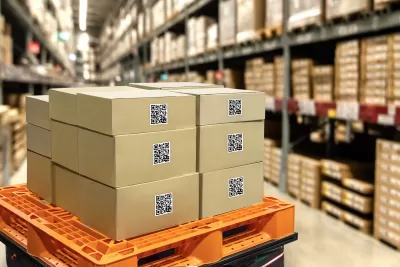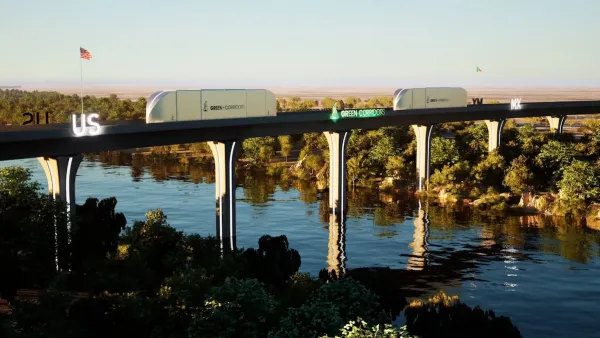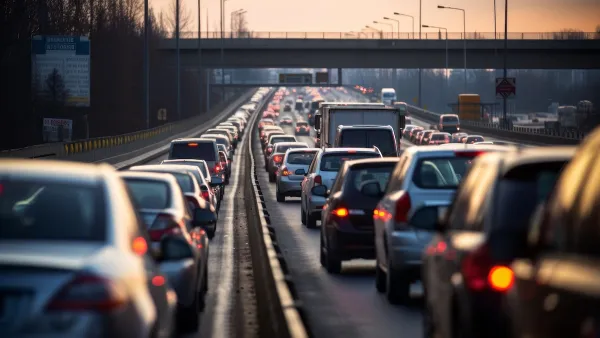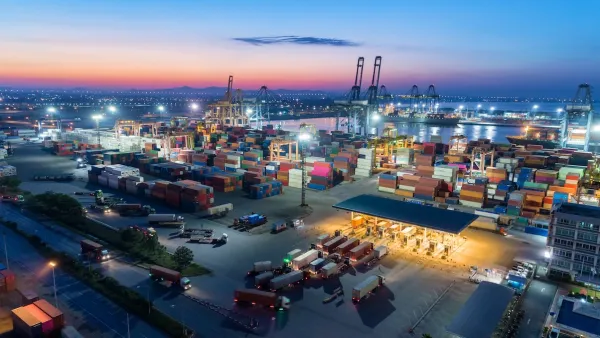Supply chain expansion can have specific impacts on urban development as people move to metropolitan areas and require more involved participation at all levels of the supply chain.

The last few years have shown how dependent everyone is on a functioning, efficient supply chain. Lapses in production and worker shortages aren’t the only factors influencing it, either. Supply chain expansion impacts urban development in specific ways as people move to larger cities and need more from participants.
1. Companies are building onshore industrial hubs
Efficiency and timeliness are two essential elements of a functioning supply chain. Manufacturing and shipping products from overseas isn't optimal for ensuring those things. Companies reflecting on the last few years are looking to build more onshore industrial hubs to fix that.
Manufacturing and industrial headquarters located within the country would reduce consumer wait time. The hubs could also provide additional resources for manufacturers that cities don’t have.
Electricity plants would boost the power-providing capacity of urban areas so manufacturers don’t overload the local network. Commercial buildings like manufacturing plants make 18 percent of America’s annual energy consumption, so this support is essential to keep the lights on for residents and businesses.
2. Additional delivery systems are forming
The addition of industrial hubs within or outside of urban centers means companies can take more orders from nearby residents. The increased demand for consumer goods also requires stronger delivery infrastructure.
National and international delivery brands have extensive networks that cross national borders. However, that doesn’t mean they have robust delivery capabilities within urban areas, so other networks are forming to meet this growing demand.
Companies may become first-party logistics (1PLs), using internal delivery drivers to get orders to their consumers. This eliminates the need for third-party deliveries, reducing the odds that undeveloped urban infrastructure will come between consumers and their purchases. It’s a significantly helpful step for companies to take, but not all businesses can manage that.
Others connect with second-party logistics (2PL) companies to negotiate delivery partnerships. After completing orders, brands pass the packages to delivery crews using alternative ground transportation like vans or bikes. These might better navigate dense urban traffic, another result of more people moving into big cities.
Creative delivery systems like bikes and drones are crucial for vehicle infrastructure and urban development. Additional production plants create more jobs, inviting people to move to the area. New residents add cars to a city’s primary infrastructure, and getting ahead of this challenge with innovative delivery systems will be vital to maintaining a functional supply chain.
3. Digital infrastructure is improving
The foundational aspects of a supply chain’s operations need fortification as growing economies rely more heavily on them. The modern world operates in physical and digital spaces, so improving virtual infrastructure is one way supply chain expansion impacts urban development.
Companies use the internet to track transit deliveries from material suppliers and ship perishable goods. It’s how they accept a consumer’s pin location to deliver a meal or provide 24/7 customer support over instant messaging. Without high-speed, reliable internet, the entire supply chain begins to slow.
Urban planning experts are formulating long-term plans to upgrade existing networks to gigabit-capable systems. The rise of 5G also requires more data centers throughout cities to keep supply chain experts in communication without slowing down residential services. Businesses operate more efficiently without slowed or downed internet connectivity, and residents don’t feel the supply chain expansion negatively influences their daily lives. It’s a core part of developing urban infrastructure. Without improved digitization, everything from production to delivery communication would halt.
Watch the supply chain expansion
Considering supply chain expansion’s impact on urban development is crucial. Seamless cohesion isn’t possible without upgrading digital infrastructure, delivery systems, and industrial plant locations. Cities need robust systems to support these daily intricacies for residents and businesses to thrive.

Maui's Vacation Rental Debate Turns Ugly
Verbal attacks, misinformation campaigns and fistfights plague a high-stakes debate to convert thousands of vacation rentals into long-term housing.

Planetizen Federal Action Tracker
A weekly monitor of how Trump’s orders and actions are impacting planners and planning in America.

San Francisco Suspends Traffic Calming Amidst Record Deaths
Citing “a challenging fiscal landscape,” the city will cease the program on the heels of 42 traffic deaths, including 24 pedestrians.

Defunct Pittsburgh Power Plant to Become Residential Tower
A decommissioned steam heat plant will be redeveloped into almost 100 affordable housing units.

Trump Prompts Restructuring of Transportation Research Board in “Unprecedented Overreach”
The TRB has eliminated more than half of its committees including those focused on climate, equity, and cities.

Amtrak Rolls Out New Orleans to Alabama “Mardi Gras” Train
The new service will operate morning and evening departures between Mobile and New Orleans.
Urban Design for Planners 1: Software Tools
This six-course series explores essential urban design concepts using open source software and equips planners with the tools they need to participate fully in the urban design process.
Planning for Universal Design
Learn the tools for implementing Universal Design in planning regulations.
Heyer Gruel & Associates PA
JM Goldson LLC
Custer County Colorado
City of Camden Redevelopment Agency
City of Astoria
Transportation Research & Education Center (TREC) at Portland State University
Jefferson Parish Government
Camden Redevelopment Agency
City of Claremont






























